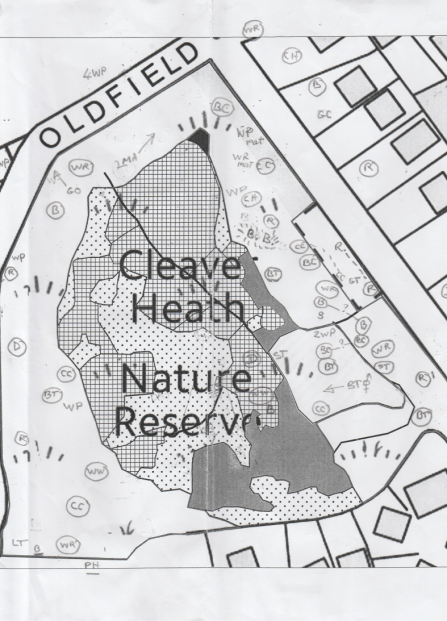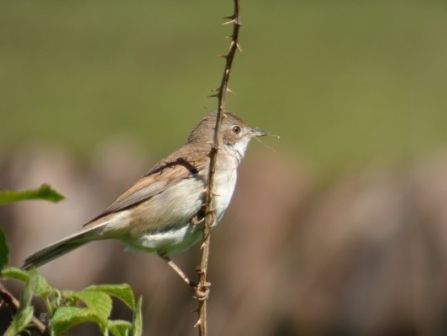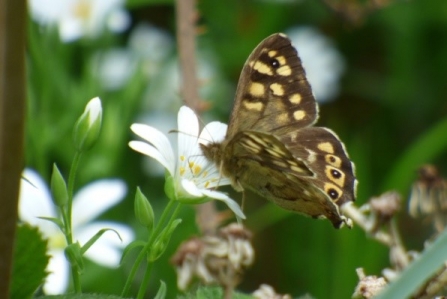The breeding season has now reached its climax. To date, late May, we have conducted 7 Common Bird Census surveys. The idea of the census is to build up a picture of the main territories of birds which are present during the breeding season. This is done species by species. While I am walking round the reserve over a standard route, I am marking on a large scale map of what I am seeing and hearing. Below is what my scruffy map looks like.
Early Summer at Cleaver Heath

The codes tell us what the identified bird is, where it is, and what it is doing. This takes about one and a half hours, and I try to do it before the roar of commuter traffic builds up, the garden and building machinery springs into action, and the early morning dog walkers arrive. There is one map for each visit. And now for the exciting bit. Some rainy day(s) at the end of the season, I will create a new map for each species (maybe 15 of those?!) showing the history of where, and when birds of that species have been active over the breeding period. This information can then can inform us when we come to our habitat management strategy.

Willow warbler c. Alan Irving
The order of arrival of the warblers has been chiffchaff, blackcap, willow warbler then, after a gap, whitethroat.
So far, we know about at least 4 chiffchaff and 3 willow warbler territories in what is, after all, quite a small reserve (7.4 acres). I have seen linnets on more than one survey, including a pair diving promisingly in and out of the gorse. Of course, the frustrating thing is seing other interesting birds and bird behaviour around the reserve, but NOT during the official survey time window. These ones don’t count - still great to watch though!
We have now done 9 of the weekly butterfly surveys starting in the reserve, and continuing to Thustaston Church. This is the first year of the new ‘Cleaver Heath Transect’, now recognised by UKBMS. Our previous experience of butterflies on this route had led us to expect swarms of the creatures come early summer. Sadly, not so. Last year, following a wet spring, was a very poor year nationally for butterflies. So maybe we should not be surprised at the small numbers following on this year. Anyway, the stats for these 9 visits are: 81 butterflies from 12 species – we think! My co-observer, the previous Volunteer Reserve Manager, knows much more about these things than I, so I am having to learn fast.

Speckled wood c. Alan Irving
The small whites can be difficult to distinguish when they flutter by without stopping – we see small white, green- veined white and the female orange tip.
Most of us can spot the male orange tip with its eponymous wing markings but the female (on top at least) is pretty well just white. They very seldom rest while you get your binoculars focussed.
Other problem species are small blue jobs. Early season ones are probably the holly blue rather than the common blue. The underwing markings are indicative. These small blue butterflies are not to be confused with the little blue which is extremely rare!
Less problematic is the speckled wood. However, the numbers are currently disappointing. We will keep watching!

